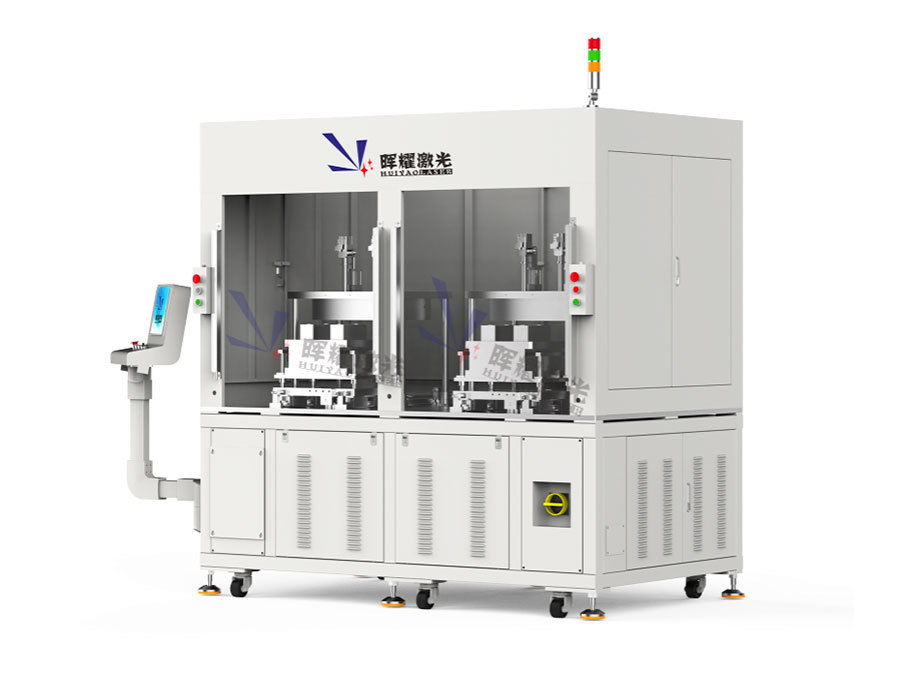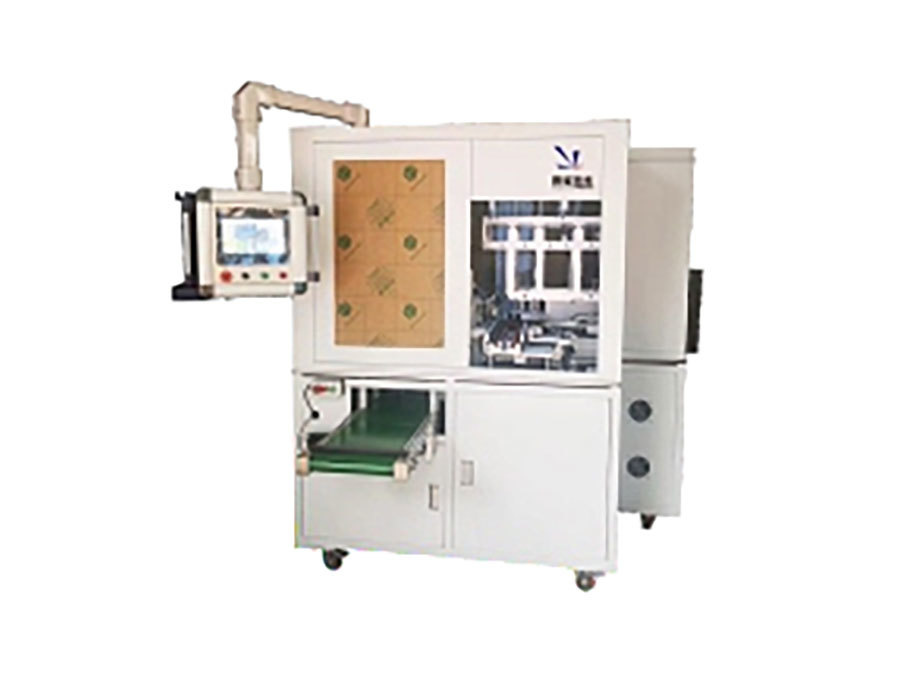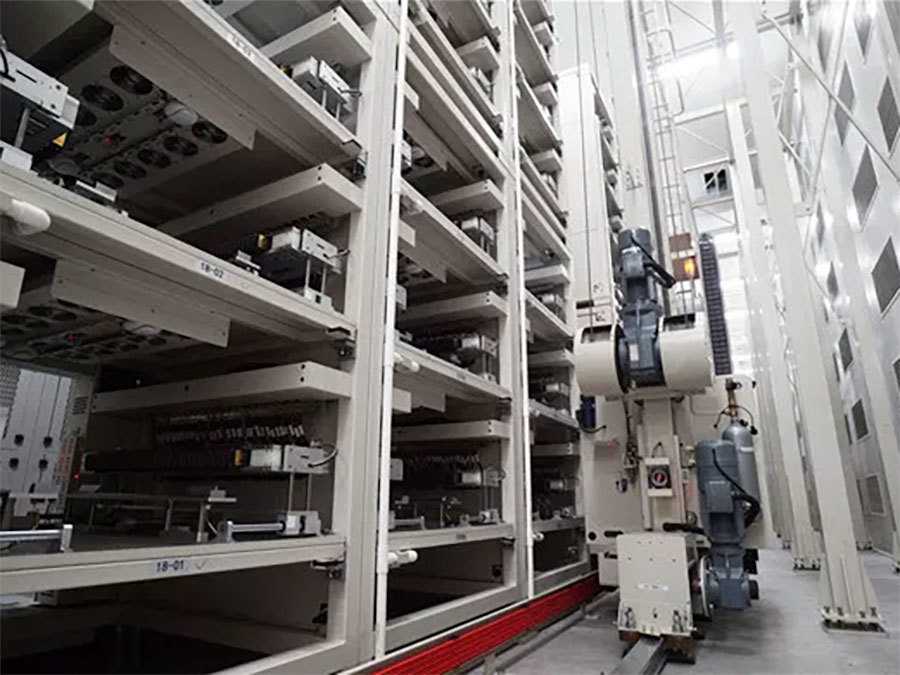Solution

ESS Battery Cell Capacity Grading Cabinet
- Product description
-
- Commodity name: ESS Battery Cell Capacity Grading Cabinet
- Commodity ID: 储能电芯分容柜
The ESS Battery Cell Capacity Grading Cabinet is a high-precision system designed for grading energy storage battery cells based on their capacity, voltage, and internal resistance.
1. Equipment Overview
The ESS Battery Cell Capacity Grading Cabinet is a high-precision system designed for grading energy storage battery cells based on their capacity, voltage, and internal resistance. This equipment is optimized for ESS applications and ensures consistent quality and performance by identifying cells with similar characteristics for balanced module and pack assembly.
2. Key Features
- High Precision: Accurate measurement of cell parameters for optimal grading.
- Multi-Channel Testing: Simultaneous testing of multiple cells to enhance throughput.
- Flexible Compatibility: Supports various cell formats, including prismatic, pouch, and cylindrical.
- Data Integration: MES-compatible for real-time data tracking and traceability.
- Safety Assurance: Comprehensive safety features, including temperature monitoring and fault alarms.
3. Technical Specifications
3.1 Cell Compatibility
- Cell Types: Prismatic, cylindrical, pouch.
- Cell Dimensions:
- Prismatic: 50 × 20 × 70 mm to 300 × 100 × 400 mm.
- Cylindrical: 18650, 21700, 4680.
- Pouch: 50 × 50 mm to 300 × 500 mm.
3.2 Measurement Capabilities
- Voltage Measurement:
- Range: 0–5 V.
- Accuracy: ±0.005 V.
- Current Measurement:
- Range: 0.1–200 A.
- Accuracy: ±0.05%.
- Capacity Measurement:
- Range: 0–500 Ah.
- Accuracy: ±0.1%.
- Internal Resistance Measurement:
- Range: 0.01–50 mΩ.
- Accuracy: ±0.1 mΩ.
3.3 Grading Parameters
- Sorting Criteria: User-defined thresholds for capacity, voltage, and resistance.
- Grading Groups: Up to 16 classification levels for precise grouping.
3.4 Testing Modes
- Charge/Discharge Cycle: Programmable current profiles for realistic performance evaluation.
- Constant Current (CC): Stable current for capacity grading.
- Constant Voltage (CV): Stabilized voltage for cell calibration
3.5 System Capacity
- Channel Count: 64–256 independent channels (expandable).
- Testing Throughput: Up to 1,000 cells per day.
- Cycle Time: Adjustable based on cell specifications and testing profiles
3.6 Data Management
- Data Acquisition: Real-time logging of cell performance data.
- Traceability: Unique serial number tracking for each cell.
- Integration: MES and ERP system compatibility for centralized data management.
- Reporting: Automated generation of grading reports and analysis charts.
3.7 Control System
- HMI: Intuitive touchscreen interface for operation and monitoring.
- PLC: Reliable control system for precise testing and safety management.
- Alarm System: Visual and audible alerts for fault conditions.
3.8 Safety Features
- Overcurrent Protection: Automatic shutdown for abnormal current levels.
- Overvoltage Protection: Prevents damage to cells due to excessive voltage.
- Thermal Monitoring: Real-time temperature monitoring with alerts.
- Emergency Stop: Accessible emergency stop buttons for immediate power cutoff
3.9 Mechanical Design
- Cabinet Dimensions: 2,000 × 1,200 × 1,800 mm (customizable).
- Weight: Approximately 1,500 kg.
- Cooling System: Integrated forced-air cooling for stable operation.
3.10 Power Requirements
- Input Voltage: AC 380V ±10%, 50/60 Hz, 3-phase.
- Power Consumption: ≤50 kW.
3.11 Environmental Requirements
- Operating Temperature: 15–35°C.
- Humidity: ≤70% RH (non-condensing).
- Cleanliness: Dust-free environment recommended for optimal performance.
4. Applications
- Energy Storage Systems (ESS): Cell grading for large-scale battery storage applications.
- Renewable Energy: Grading cells for solar and wind power storage solutions.
- Electric Vehicles (EV): Pre-assembly quality assurance for high-capacity cells
5. Maintenance and Warranty
- Maintenance Schedule:
- Weekly: Inspection and cleaning of connectors.
- Monthly: Calibration of measurement channels.
- Annually: Comprehensive diagnostics and software updates.
- Warranty:
- Standard: 1 year.
- Extended: Available upon request.
Key words:
ESS Battery Cell Capacity Grading Cabinet
Series of Products
Battery Top Cap Welding Equipment
Precise welding of top caps onto battery cases, ensuring airtight sealing and electrical connectivity for prismatic and pouch batteries.
Battery Blue Film Wrapping Equipment
Blue protective insulation film is automatically wrapped around the battery cell to enhance electrical insulation and surface protection.
Automated Guided Vehicles (AGVs) are a crucial component in modern battery PACK factories for transferring materials, components, and finished goods efficiently and safely.
Automated Storage and Retrieval Systems (AS/RS) are an essential part of modern battery PACK factories.
Get a Free Quote
PLEASE LEAVE YOUR MESSAGE AND WE WILL CONTACT YOU AS SOON AS WE RECEIVE IT!
FAQ
Q
How do you ensure consistent weld quality in the assembly of Prismatic battery packs?
A
Q
What are the best practices for cell alignment and stacking in a Prismatic battery PACK assembly?
A
E-mail:
Telephone:
Copyright © Huiyao Laser Technology (Luoyang) Co., Ltd. Has supported ipv6





